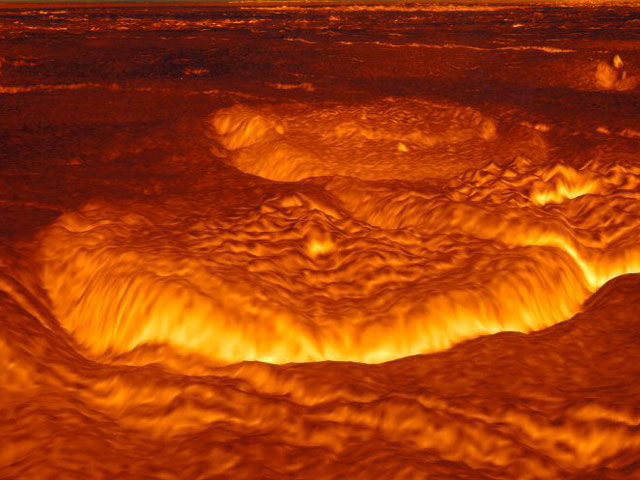What is Venus Made Of?
Although Venus is similar to the Earth in size and mass, its surface and atmosphere differ from our planet. Resurfacing in the planet's past may have created a solid crust, and the hidden core remains a challenge to study.
The surface of Venus
Shrouded by a thick atmosphere, the surface of Venus remained hidden until radar equipment arrived to probe the closest planet. Rocky ground lies beneath the layers of clouds. But unlike Mars and Mercury, which are both scarred by craters, Venus has a relatively smooth surface.
Early in the history of the solar system, while planets such as Venus were forming, the cloud of dust and rock orbiting the sun was a chaotic place. Giant rocks pounded the surface of the newly created planets and their moons. So how did Venus escape unscathed? While Venus could have been extraordinarily lucky and missed any significant damage in the turbulent young system, it is more likely that the surface of Venus has been completely redone by volcanic activity, smoothing over the scars of its early life. The planet has significantly more volcanoes than Earth, several of them the size of Earth's largest system, the Big Island of Hawaii.
Most of Venus is covered with smooth volcanic plains, with two large "continents" standing out. Ishtar Terra lies to the north, covering an area approximately the size of Australia, while the Africa-sized Aphrodite Terra lies just south of the equator.
Unlike on Earth, these continents weren't formed by plate tectonics, nor do they sit in a sea of water; the surface temperature of Venus is hot enough to melt lead. Instead, these continents make up the "rough" patches of Venus, with canyons, trenches, and mountains. Scientists think that the massive resurfacing, which took place approximately 300 to 500 million years ago, may have "turned off" any plate tectonics on the planet, completely solidifying the crust into a single surface.
The thick atmosphere of Venus also serves to shield it from bombardment even today. Only the largest of meteors make it through the clouds without burning up completely.
Breaking space news, the latest updates on rocket launches, skywatching events and more!
Inside of Venus
Venus is a rocky planet, much like the Earth. Given its similar size, mass, and density to our planet, scientists think that its interior is much like Earth's own. In addition to a crust significantly older than Earth's constantly changing surface, Venus likely also sports a mantle and a core. The mantle is probably rocky, and the core is probably somewhat liquid.
But despite the planets' similarities, the magnetic field of Venus is far weaker than on Earth's. The reasons for that may have to do with the core. Part of it could simply have to do with motion. The planet spins very slowly — once every 243 Earth days — and the core may not spin fast enough to create a magnetic field the way the core of Earth and other planets do. The core may also be completely solid, or may not even exist at all. Taking readings on the interior of another planet is a significant challenge.
— Nola Taylor Redd, SPACE.com Contributor
Related:

Nola Taylor Tillman is a contributing writer for Space.com. She loves all things space and astronomy-related, and always wants to learn more. She has a Bachelor's degree in English and Astrophysics from Agnes Scott College and served as an intern at Sky & Telescope magazine. She loves to speak to groups on astronomy-related subjects. She lives with her husband in Atlanta, Georgia. Follow her on Bluesky at @astrowriter.social.bluesky

